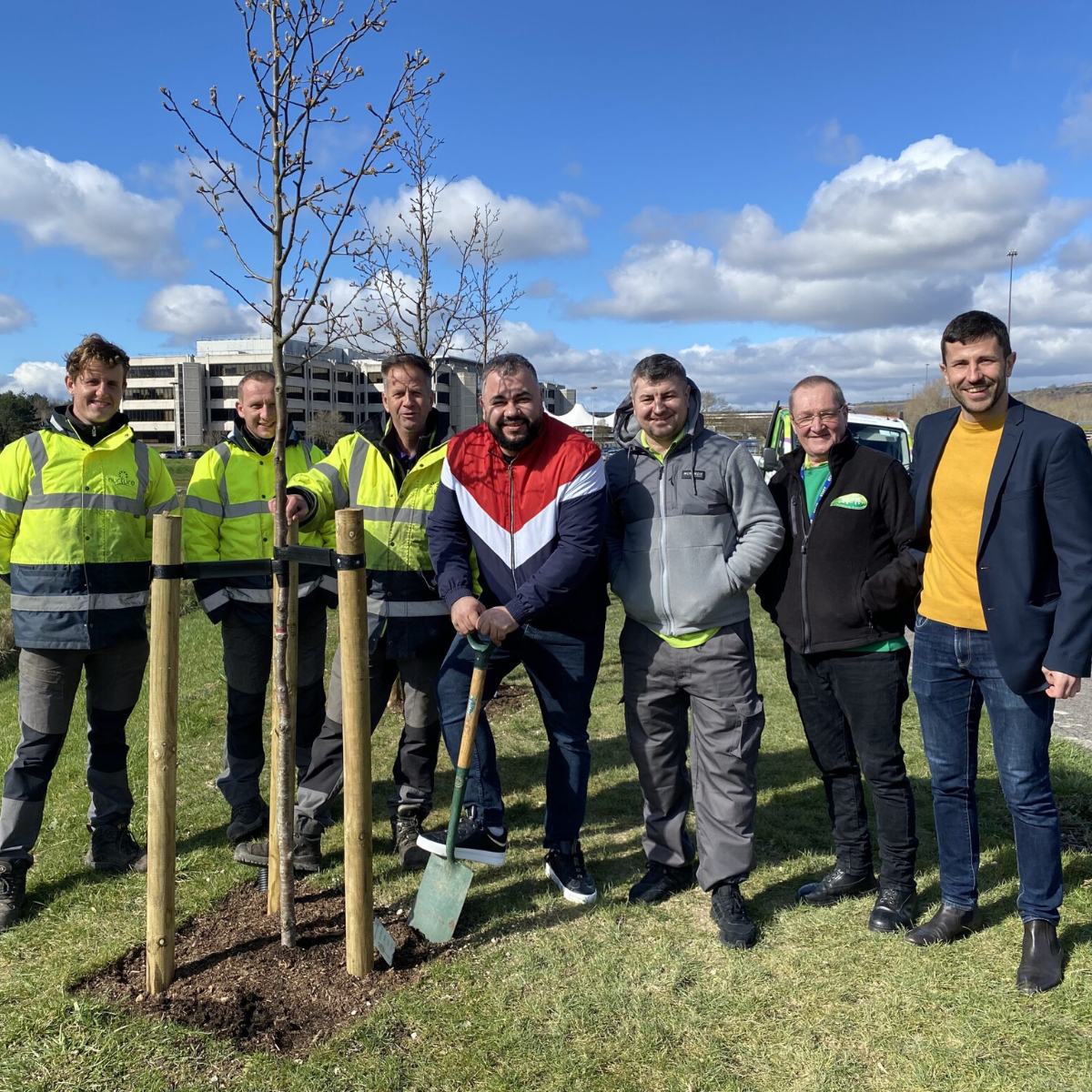A few months ago, we sponsored a tree at one of our client sites, Lakeside North Harbour. It's part of their tree-planting initiative, which you can read about here.
It is Pyrus Chanticleer - great for the bees.
The Pyrus Chanticleer is a cultivar of the ornamental pear tree (Pyrus calleryana). Also known as the Callery pear or Bradford pear, the Chanticleer is a popular choice for landscaping due to its attractive features.
The tree will grow to become a medium to large-sized deciduous tree with a pyramidal or conical shape. It typically reaches 9 to 12 metres and has a spread of about 4.5 to 6 metres. As it is now, the tree has a more narrow and upright form, but it will soon add bulk with age.
The leaves of the Pyrus Chanticleer are glossy and dark green, resembling an elliptical or ovate shape. In the fall, the foliage transforms into vibrant shades of orange, red, and sometimes purple, creating a stunning display of autumn colours. We can't wait to see it!
In early spring, the tree produces many small, white flowers in clusters before the leaves fully emerge. These flowers are quite showy and add to the tree's visual appeal. To us, this is the most critical part of the above-ground cycle of this tree because it's when the bees and pollinators come to feed.
The tree produces small, round, and inedible fruit in the fall, which attracts birds. The brown fruit is typically about half an inch in diameter. While they might not be as beautiful as the tree's blossom, they are helpful. The fallen and half-eaten fruit will provide food for insects and sustenance for the earth.
As a keen hobbyist beekeeper and environmentalist, Antoni was especially delighted with this choice because aside from attracting pollinators, the Pyrus Chanticleer is helpful in soil management.
The extensive root system of the Pyrus Chanticleer helps stabilise soil and prevent erosion, especially on sloped landscapes. The tree's roots bind the soil together, reducing the risk of soil runoff during heavy rain or wind events.
As the tree's roots grow and spread, they create channels and pores in the soil. These allow for better water infiltration and aeration, enhancing the overall soil structure and promoting healthier soil conditions.
Trees can also help mitigate soil pollution by absorbing and sequestering pollutants from the soil. They act as a natural filter, reducing the movement of specific contaminants deeper into the soil profile.
The dense canopy of the Pyrus Chanticleer provides shade, which helps regulate soil temperature and reduces water evaporation from the soil surface. That is especially beneficial during hot and dry periods, as it helps maintain soil moisture levels.
Trees like the Pyrus Chanticleer sequesters carbon dioxide from the atmosphere through photosynthesis. The carbon is stored in the tree's biomass, including its roots and branches, contributing to climate change mitigation. That's why we are investing in planting more trees.
While we appreciate that our net zero journey has to be more than just planting trees, we also feel that planting is vital for local habitats. We aim to create and participate in many more environmental projects like this. We would like to thank Lakeside North Harbour for allowing us the opportunity to participate.


